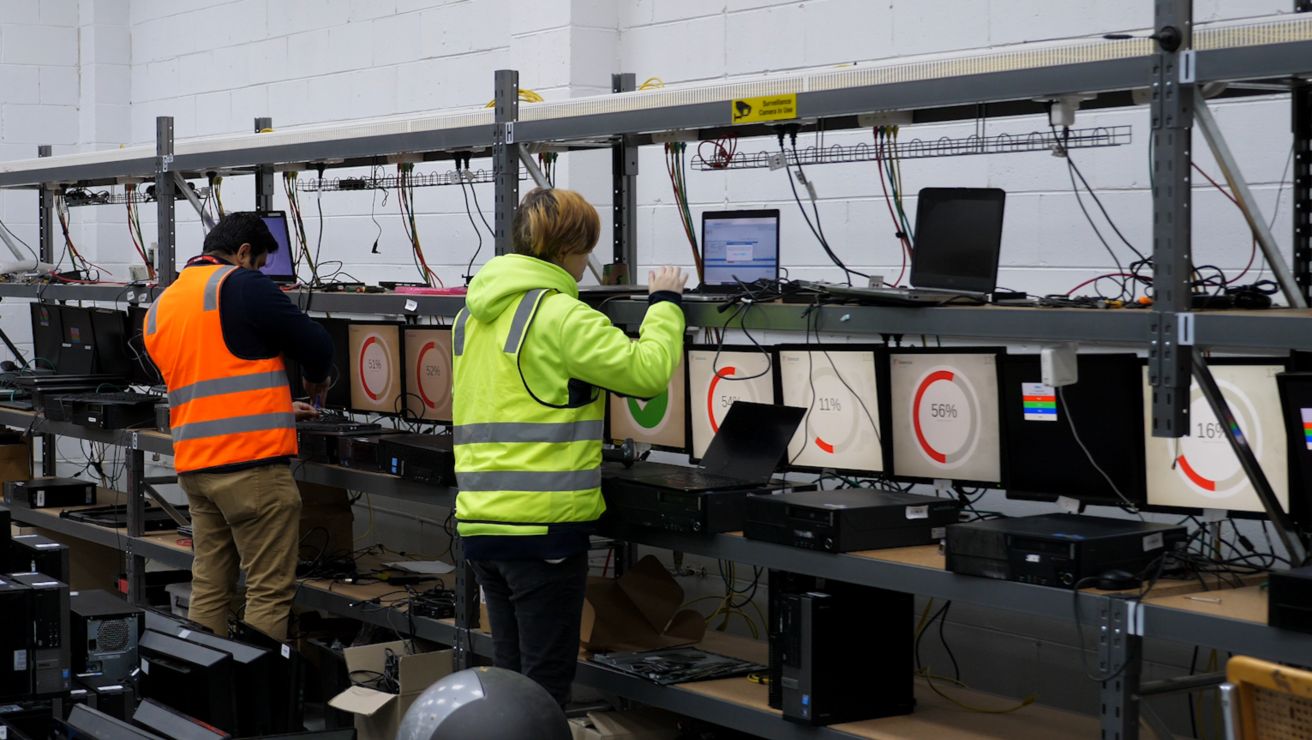A tech-based approach to sustainability
We believe every company has a responsibility to operate sustainably. At Telstra, our vision of sustainability is organised into two areas, each powered by the heart of our business—technology.
Communities
Reports
REDUCING CARBON EMISSIONS
We're 44% there on our scope 1+2
We've now reduced our scope 1+2 emissions by 44% and our scope 3 emissions by 43%, towards a target of 70% (scope 1+2) and 50% (scope 3) by 2030.
Target set against a 2019 financial year baseline (excluding Digicel Pacific).
INVESTING IN RENEWABLE ENERGY
Supported renewable energy projects worth more than $1.6B
By investing in new solar and wind farms across Australia, we've enabled renewable energy that's equal to 76% of the energy we need to power our business. We're aiming to reach 100% by the end of 2025.
RECOVERING OLD TECH
Over 769,000 mobiles, modems and other devices
That's a lot of potential e-waste. Discover the best way to reuse or recycle your devices through our programs.
In the 2025 financial year.
Communities
BUILDING DIGITAL SKILLS
Bringing the digital world to 677,000 Australians
Learnable skills like using the internet, sending emails and making video calls help people feel better connected.
Since FY21.
KEEPING YOU CONNECTED
Helping 1.9M customers in vulnerable circumstances stay connected
Difficult situations call for compassion and practicality. We have many ways to help people in need.
In the 2025 financial year.
CONNECTING COMMUNITIES
Expanding our regional coverage by 360,000 km²
Which means we've more than tripled our goal of 100,000km² additional regional coverage.
Since FY21.
Supporting our First Nations customers
If you need practical help for your Telstra phone or internet, want more from your mobile service or have feedback, we're here to help.
You can also explore our three-year Reconciliation Action Plan (RAP), aimed at rebuilding trust with First Nations communities.
Stories

SUSTAINABILITY
Creating impact for communities and our planet

ENVIRONMENT
The Telstra Trade-In trick
Reports

Bigger Picture Sustainability Report
Where we're making the biggest impacts.

What is digital inclusion?
Access, ability and affordability are the foundations of digital inclusion in Australia.

Modern Slavery Act Statement
How we manage and mitigate the specific risks of modern slavery in our operations and supply chains.
Rather get in touch? Let's get you connected
Online help & support
Find answers to your frequently asked questions.
My Telstra app
View your services, pay your bill, troubleshoot tech issues, contact us via messaging and much more.
Multilingual support
Speak with us in your preferred language. We've got you covered.


